AMD has officially unveiled its Ryzen Threadripper 9000 series, a new wave of Zen 5-based high-end desktop (HEDT) processors, scheduled to launch on July 31. With up to 64 cores, 128 threads, and boost clocks peaking at 5.4 GHz, this lineup aims to push multi-core performance and memory bandwidth to new heights while maintaining the aggressive pricing of its predecessor, the Threadripper 7000 series. These SKUs were announced earlier this year and have leaked countless times, but we've finally reached the actual launch.
The 9000 series fills the space between AMD’s mainstream Ryzen chips and its recently introduced Threadripper PRO 9000 WX-series, but without the workstation price tags. These non-Pro SKUs are designed for enthusiasts, creators, and developers who demand extreme performance for rendering, video editing, AI workloads, and heavy multi-threaded tasks, but who don’t need the expanded feature set or octa-channel memory of the Pro platform. The standout detail is the pricing as it remains unchanged from the previous generation: the 64-core 9980X comes in at $4,999, the 32-core 9970X at $2,499, and the 24-core 9960X at $1,499.
Ryzen Threadripper 9000 Specifications and Pricing
Swipe to scroll horizontally
Threadripper 9980X | 9000 HEDT (Zen 5) | 64C / 128T | 3.2 / 5.4 GHz | 256 MB | Quad-channel DDR5-6400 (Up to 1TB) | Up to 80 PCIe 5.0 | 350W | $4,999 |
Threadripper 9970X | 9000 HEDT (Zen 5) | 32C / 64T | 4.0 / 5.4 GHz | 128 MB | Quad-channel DDR5-6400 | Up to 80 PCIe 5.0 | 350W | $2,499 |
Threadripper 9960X | 9000 HEDT (Zen 5) | 24C / 48T | 4.2 / 5.4 GHz | 128 MB | Quad-channel DDR5-6400 | Up to 80 PCIe 5.0 | 350W | $1,499 |
Threadripper PRO 9995WX | 9000 PRO (Zen 5) | 96C / 192T | 2.5 / 5.4 GHz | 384 MB | Octa-channel DDR5-6400 (Up to 2TB) | Up to 128 PCIe 5.0 | 350W | $11,699 |
Threadripper PRO 9985WX | 9000 PRO (Zen 5) | 64C / 128T | 3.2 / 5.4 GHz | 256 MB | Octa-channel DDR5-6400 | Up to 128 PCIe 5.0 | 350W | $7,999 |
Threadripper PRO 9975WX | 9000 PRO (Zen 5) | 32C / 64T | 4.0 / 5.4 GHz | 128 MB | Octa-channel DDR5-6400 | Up to 128 PCIe 5.0 | 350W | $4,099 |
Threadripper PRO 9965WX | 9000 PRO (Zen 5) | 24C / 48T | 4.2 / 5.4 GHz | 128 MB | Octa-channel DDR5-6400 | Up to 128 PCIe 5.0 | 350W | $2,899 |
Threadripper PRO 9955WX | 9000 PRO (Zen 5) | 16C / 32T | 4.5 / 5.4 GHz | 64 MB | Octa-channel DDR5-6400 | Up to 128 PCIe 5.0 | 350W | $1,649 |
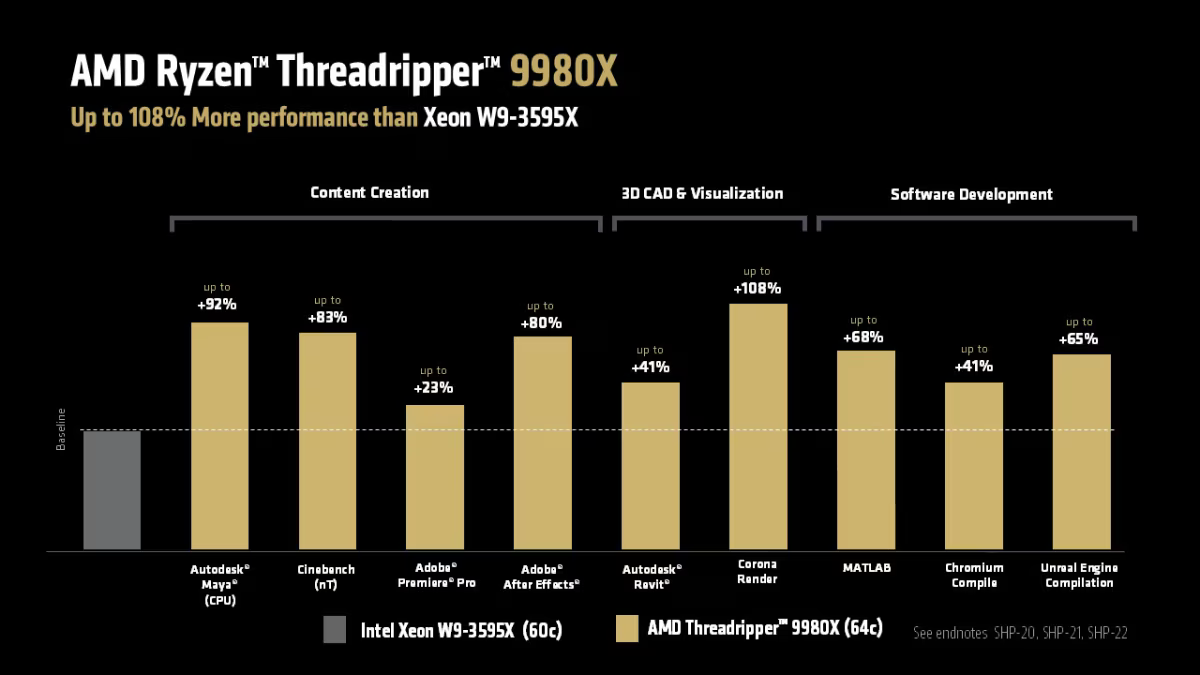
The lineup slots into AMD’s TRX50 platform, which supports 4-channel DDR5-6400 RDIMM memory and up to 80 PCIe 5.0 lanes (92 in total, with 8 PCIe 4.0 lanes). This combination gives creators access to double the memory bandwidth of mainstream desktop systems and ensures bandwidth headroom for modern GPUs and storage. Like its predecessor, overclocking remains supported out of the box.
Performance claims from AMD are bold; the flagship 9980X is said to deliver up to 108% better performance compared to Intel’s 60-core Xeon W9-3595X in compute-heavy workloads, while the 32-core 9970X offers 137% faster results against Intel’s 44-core Xeon W9-3575X. AMD also highlights significant gains in real-world creator benchmarks, such as Cinebench 2024 and Adobe After Effects, as well as AI inferencing and large-model processing, areas where multi-core throughput and PCIe bandwidth are crucial.
Each chip in the 9000 series packs a 350W TDP, but thanks to Zen 5’s refined architecture, efficiency and clock scaling have improved, with all SKUs capable of hitting 5.4 GHz boost clocks. There’s also full AVX-512 support with a 512-bit data path, a significant step up for workloads like scientific computing, AI, and video encoding.
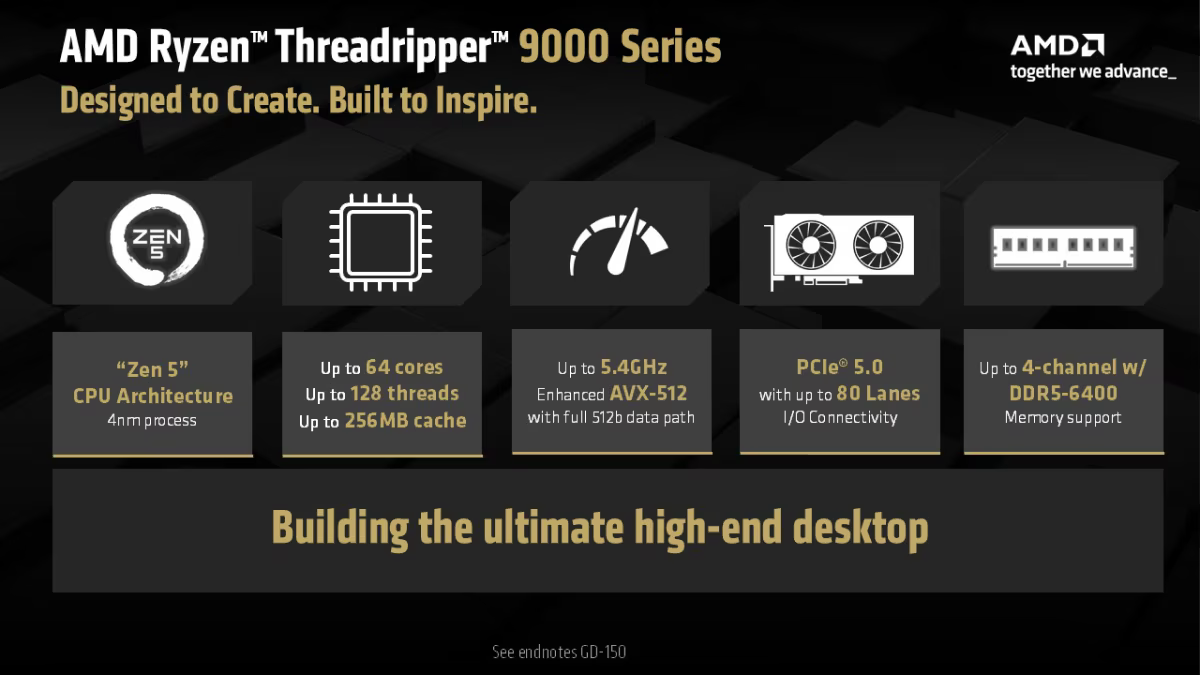
With the 9000 series, AMD is making a clear statement that HEDT isn’t dead, and Zen 5’s multi-core scaling ensures it’s more relevant than ever. Whether for AI developers requiring bandwidth for multi-GPU setups or creators demanding brute-force rendering performance, these chips aim to provide unmatched flexibility without entering the cost-prohibitive territory of the PRO line. AMD’s decision to hold prices steady while delivering architectural improvements and higher clock speeds is also a strong move against Intel’s Xeon W lineup, which continues to lag in raw performance per dollar.
This launch also rounds out AMD’s Zen 5 desktop portfolio, complementing the mainstream Ryzen 9000 CPUs with a high-end offering that targets professionals and enthusiasts alike. Together, the two families demonstrate how AMD is leveraging its architectural lead to dominate both consumer and professional desktop markets, with a bullish return for HEDT, offering more performance headroom while maintaining aggressive pricing.
Follow Tom's Hardware on Google News to get our up-to-date news, analysis, and reviews in your feeds. Make sure to click the Follow button.

 4 months ago
48
4 months ago
48
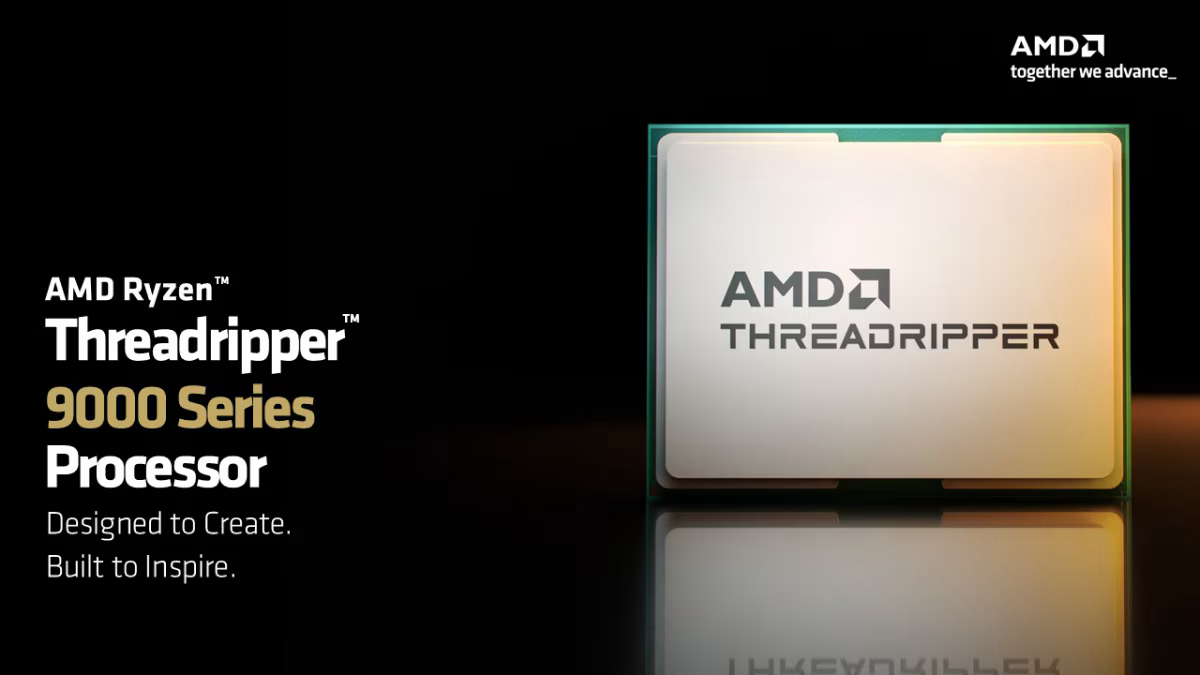
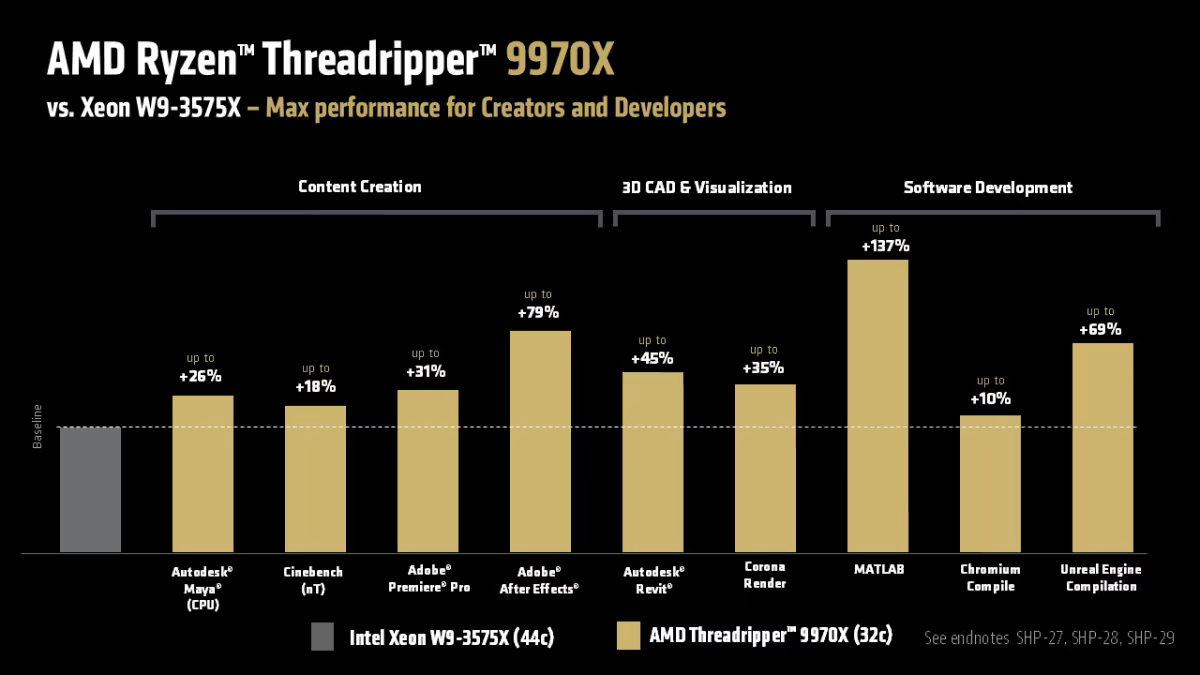
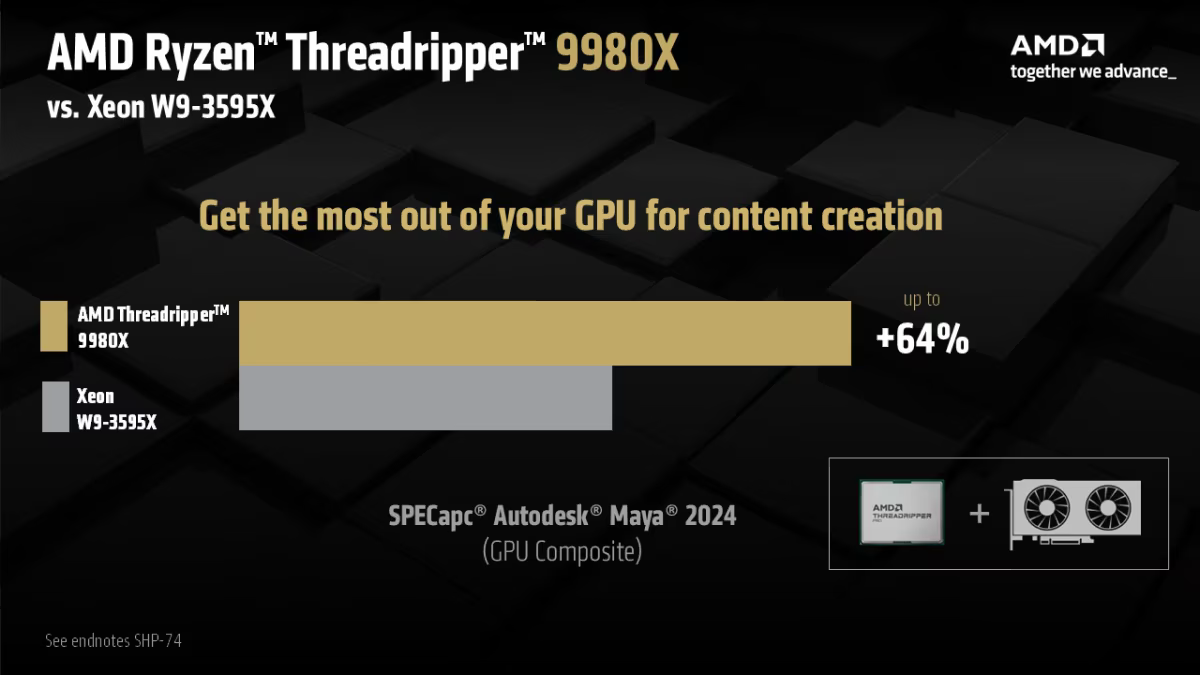
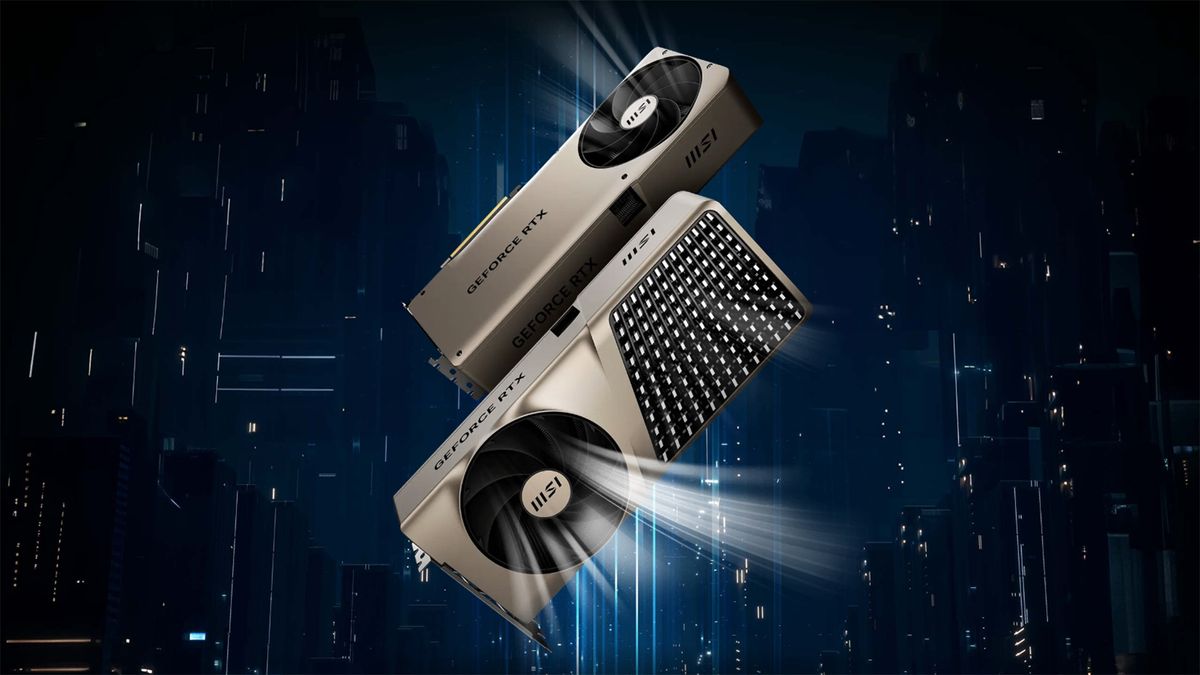
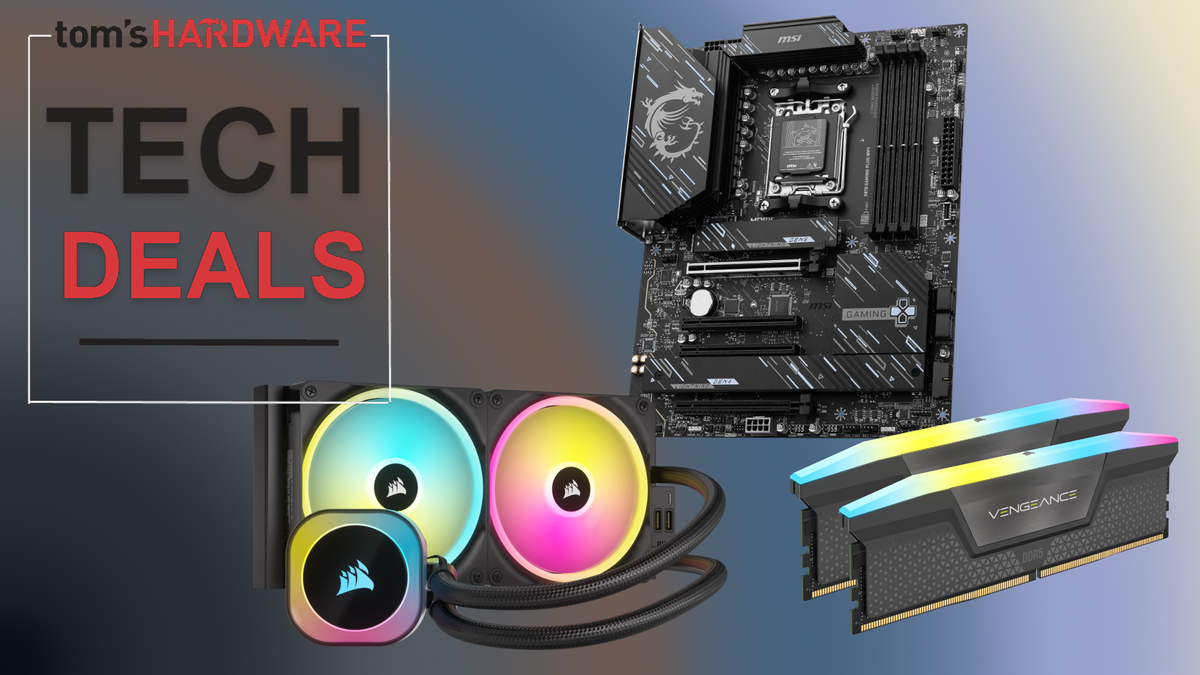
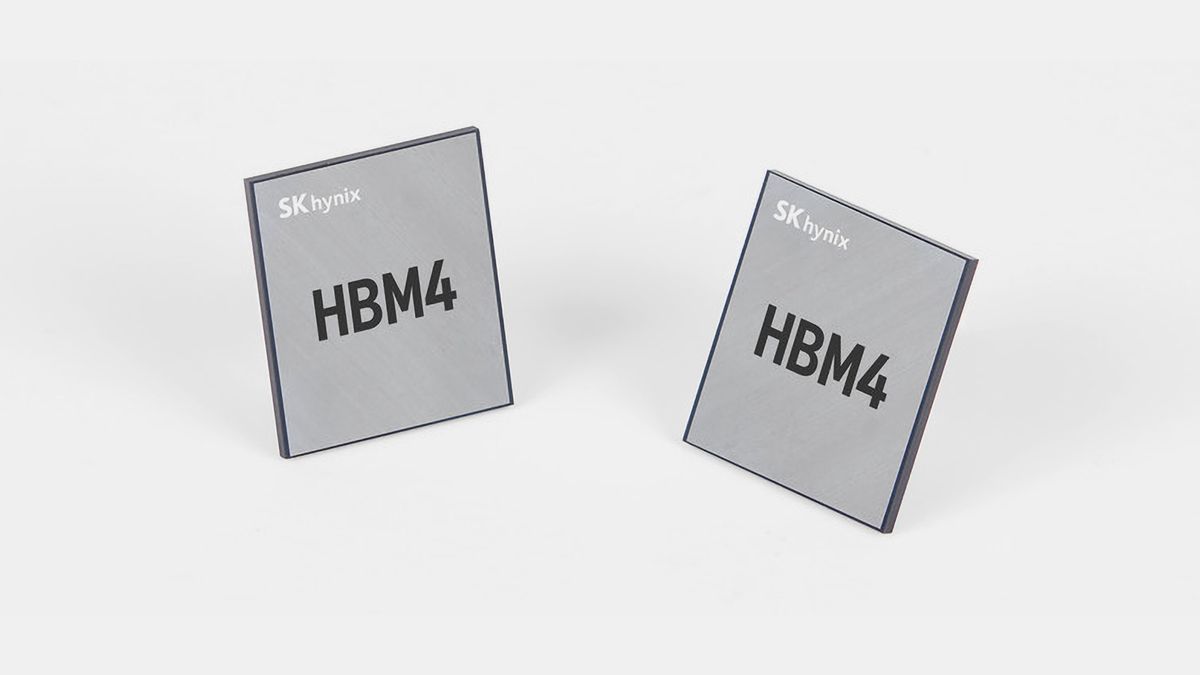


 English (US) ·
English (US) ·